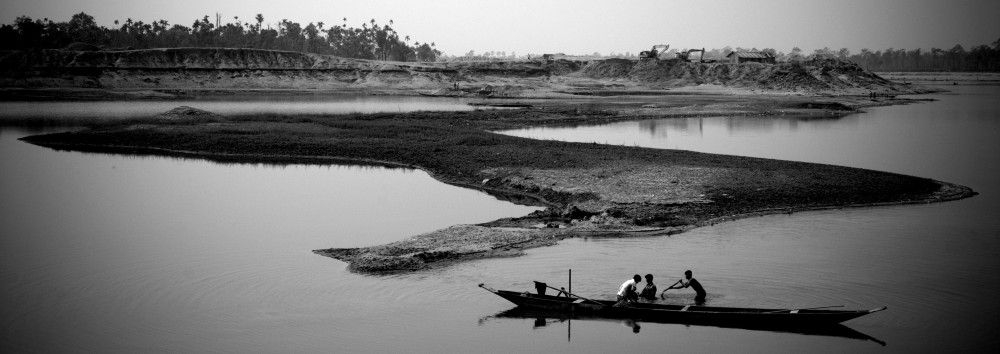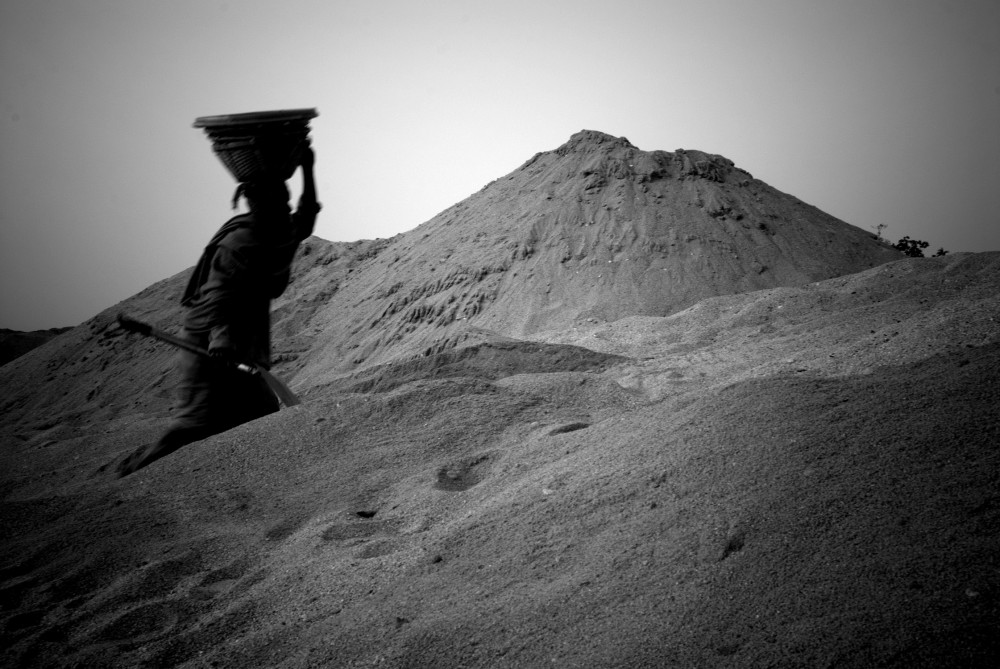“Once upon a time there was a blue River that flowed in Jaflong, but now it is going to lose its natural beauty. Uncontrolled stone crushing threatens the local people’s health,” says Probal Das, a stone worker.
The story focuses on the hard working community of Jaflong, on the northeastern part of Bangladesh. It was once known for its lush green hills, rolling tea gardens, and a mosaic of stones and rocks. Now Jaflong is shrinking; its bright blue skies are covered with thick smoke and dust. The crystal clear water of the Piyain River, which originates in the Himalayas, is now dying a slow death.
Just 56 kilometers away from Sylhet city, Jaflong is located on the foot of the beautiful Meghalaya Hills on the Indo-Bangla border. During monsoon the strong currents of the river wash down precious rocks and pebbles from the Indian hills into Jaflong. Every day at the crack of dawn, hundreds of little black and grey boats descend into the river. Laborers of all ages, clamor through the river, buckets and spades in hand they collect stones.
This trade has a geological limit; stones are collected at a feverish speed triggering a gradual decrease in the availability of stones. So the laborers are taking the risk of invading the no-man’s land along the Indo-Bangla border fueling a squabble between the border security forces of the two nations. More than 10,000 men, women and children work as stone labourers. Hundreds continue to migrate to Jaflong in search of jobs at the stone crushing sites. Uncontrolled and unstoppable stone extracting and crushing at Jaflong is harming the environment; endangering the health of workers, creating sound and air pollution, and is shrinking the biodiversity of the region.
The local community is struggling with the cacophonous sounds of the machines and the dusty haze, lack of workplace safety, absence of labor laws, and dismal living conditions in the slums. Children are the worst victims and they are forced to enter the industry early on because of grueling poverty. Most children suffer from Diarrhea due to the lack of sanitation and safe drinking water and heart problems because of the deafening sounds of the rustic machines. Laborers are denied legal protection and even basic human rights.
In the last two years, I have seen more than 250 stone-crushing machines being used and nearly 3000 trucks of stones being crushed every day. According to Abul Hossain, a local farmer it is impossible to grow crops because the thick clouds of dust are destroying soil fertility.
The Bangladeshi government has failed to control the stone-crushing industry at Jaflong. The rapid erosion of land around the river is a threat to the adjacent Khasia (indigenous people) villages, which will be lost in the next five years if no steps are taken.
During winter, the river becomes a roadway for huge trucks and gigantic cranes. And thousands of laborers work through fog, dust and nippy weather for more than 12 hours a day. This industry is growing haphazardly, triggering an increase in the use of machines, loss of income for the stone workers and a faster loss of natural resources.
I have witnessed the slow decay of the community of Jaflong, the spirit of the labourers, their trials and tribulations, and their resolve to survive and be happy. In my own small way, I want to document the loss of the environmental health of Jaflong due to industrial abuse and highlight the untold stories of thousands of stone workers.





































































